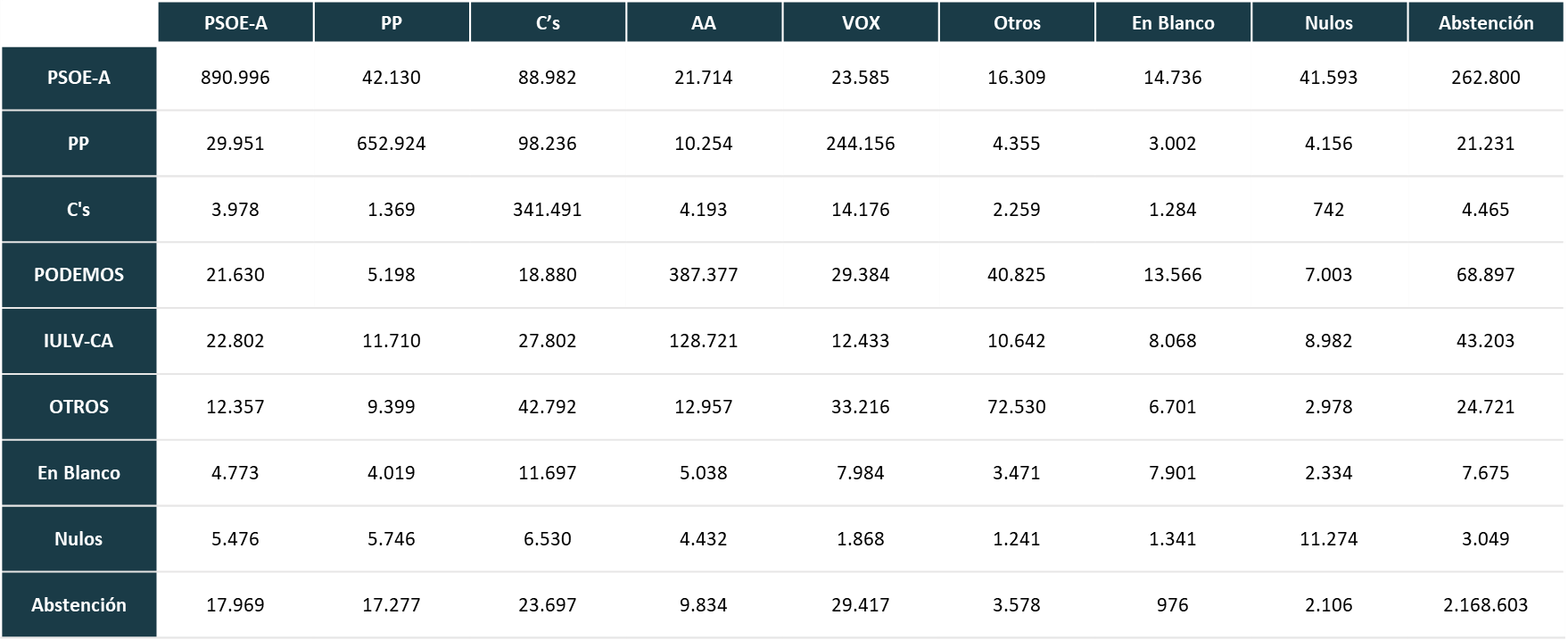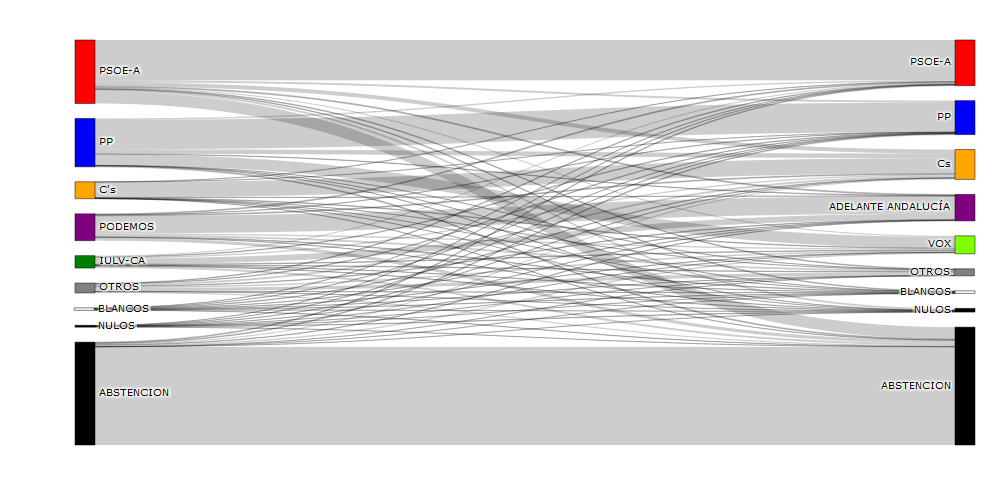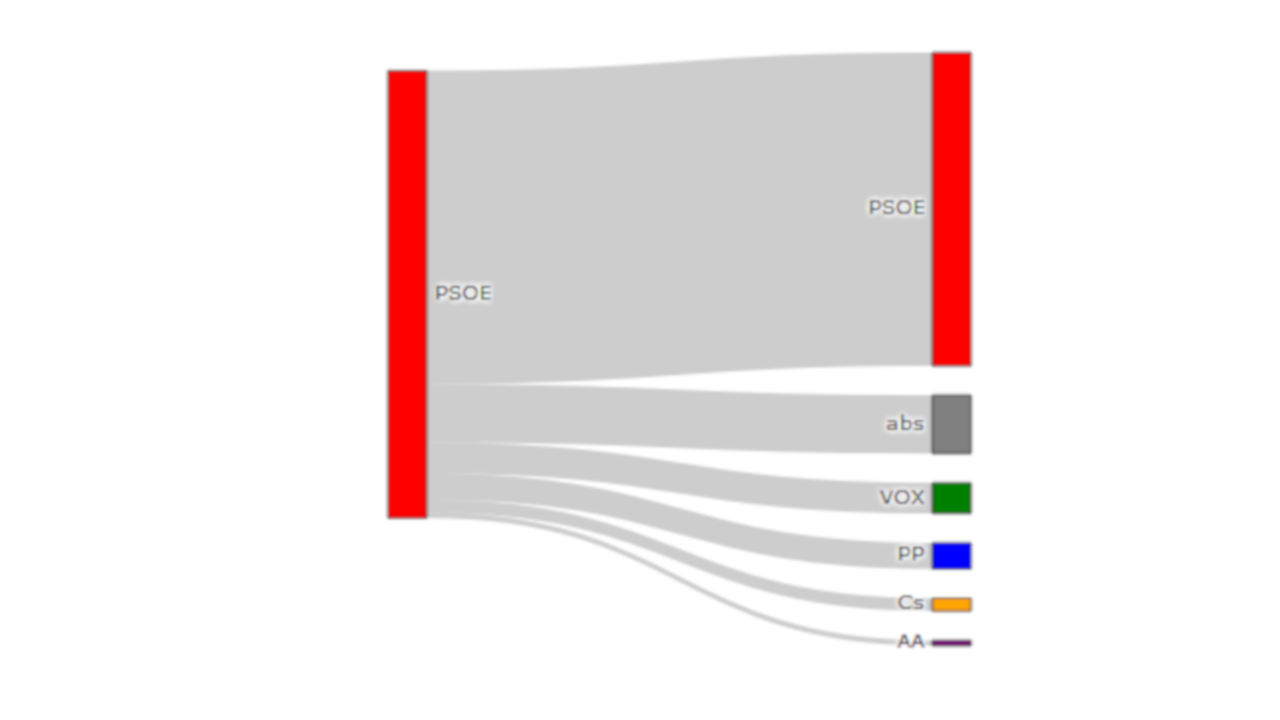
The importance of interpreting the voting movements between elections
The study of movements or transfers of votes between elections has always been an issue of interest for political analysts. The matrices of transfer of vote, defined as double entry tables where the electoral options of origin are represented by row and those of destination by columns, synthesize these movements. In environments of great electoral stability, voters tend, in large part, to vote for the same party, so that voting distributions tend to exhibit low variability. In present-day Spain, however, the situation has become more liquid and the matrices of transference more entropic.
Usually, transfer matrices are estimated through panel surveys, or in post-electoral surveys, using present vote and vote recall. This approach, however, poses serious difficulties in terms of efficiency and effectiveness. On the one hand, large samples are necessary to be able to estimate, with a minimum of precision, all the probabilities of change; since, from a statistical point of view, not a single population is studied, but as many as electoral options are considered in the election of origin.
On the other hand, surveys are not exempt from non-sampling errors (mainly non-response biases and measurement errors) that undermine their representativeness. Non-response biases appear because of the differential propensity that different types of voters manifest when participating in a survey. Propensity that is not constant and depends on factors such as the sociopolitical context, the pollster, the vote itself and even if it was changed. Measurement errors appear because of the difficulty humans have in remembering past events. Voters when we are interrogated about our past electoral behavior usually manifest memory problems, be influenced by questions of social desirability or, even, by our current vote. Both questions, combined, generate doubts about the variance and bias associated with the estimation of vote transfers based on survey results.
As an alternative, methodologies based on ecological inference can be used, such as the one programmed in the Transference * Electoral software (Pavia, 2016), which try to estimate the individual behaviors from the observed values. The idea is to exploit the variations that occur in all the voting units, in the marginal distributions of registered vote, both in the elections of origin and of destination, to learn about joint distributions, subject to the restrictions imposed by what really has occurred.

As an example of a transfer matrix, we can see Table 1, which shows a vote transfer scenario between two elections. The information contained in the table is very dense and difficult to digest, so its graphical representation using a Sankey (or sediment) diagram facilitates its understanding (see Figure 1). The Sankey diagram allows graphically displaying the vote transfers that occur between the choices of origin (to the left of the graph) and destination (to the right of the graph), using the thicknesses of segments and lines to report the relative sizes of the electoral options and transfers.

When there is a lot of electoral mobility, presenting the whole matrix in a single representation can produce some confusion, so in those occasions it can be interesting to build Sankey diagrams for rows or columns. By way of example, Figure 2 shows the transfers associated with the first row of the matrix of Table 1.

The estimation of transfer matrices using this methodology has the advantage of producing consistent estimates of electoral mobility for each voting unit (not only for the entire electoral space) and, therefore, makes it possible to have more detailed and disaggregated information (for example , at the level of constituency or for large municipalities) that facilitates more detailed analysis. The ecological inference requires to assume a certain homogeneity in the electoral behavior of the subgroups of voters that are close in geographic, demographic, institutional, political and socioeconomic terms.









Add comment